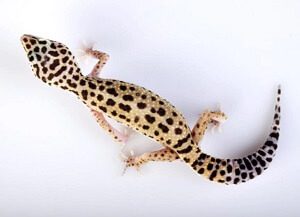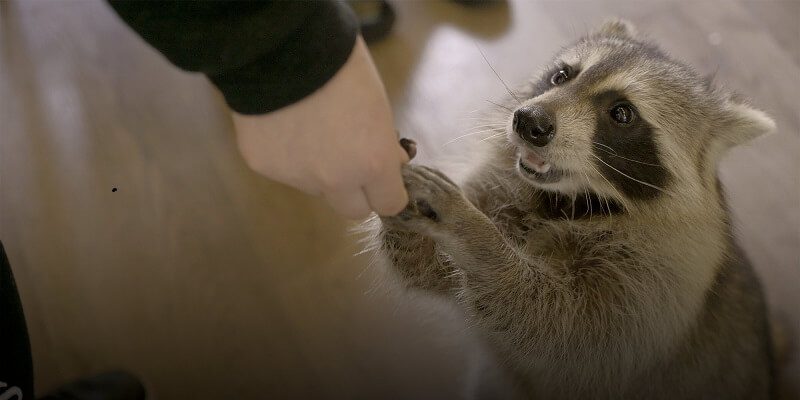For those who are beginners in raising lizards, the moment when they lose their tail can prove to be quite strange and frightening. That is why it is good to know that there is also a good part: by magic, the tails of lizards grow back in most cases.
But how does this happen, however, and what can be done to prevent it, if anything can be done?
Do all lizards lose their tail?
The tail of a lizard is a spine of several areas interconnected by cartilage, ligaments, and muscles. Each area has the ability to break. When a threat arises, the muscles and ligaments in the immediate area are broken and the tail is separated. Sometimes the tail is broken thicker – by a fracture of the vertebrae- however, in this case, it is very difficult for the lizard to recover the loss.
When they are broken, the muscles contract on their own. The cut tail also continues to shrink and move, thus drawing attention to itself, while the lizard itself runs from danger.
You might also like my articles with interesting facts about the fire salamander, frill-necked lizard, or komodo dragons.
Not all lizards have this ability, some do not have it at all while some have it only at an early age. Iguanas, for example, as representatives of the suborder of lizards, also have such abilities, however, most have this ability only at an early age, then they lose it.
This defense mechanism is called “caudal autonomy” and occurs when the lizard feels threatened or is simply taken by the tail. When this happens, the tail breaks away from the body, intravertebral – in the case of those who regenerate – so that by contracting the muscles around the vertebra it breaks in two, at which time the tail moves independently of the body, managing to distract the attention of the predators. However, this defense mechanism is used in case of maximum need, when all other defense mechanisms have not proved to be useful.
The tail of the reptile will not break, for example, if a dog barks at it. But it will happen if a person accidentally tramps on the tail, catches the lizard by the tail, or drops heavy objects on it.
Can a lizard live without its tail?
It is not surprising that the loss of an organ as important as the tail does not go unnoticed by lizards. If they live in a terrarium surrounded by other reptiles, they are no longer considered equal. The fact is that after losing its tail, the lizard decreases in size, and this is irreparable to the reptile hierarchy. Only great individuals have the right to claim universal respect and reverence before them. No one will retreat in front of a lizard without a tail. Even for its relatives, this will be very difficult. So, if your lizard has been the dominant lizard in the terrarium until this point, the loss of the tail will lead to it being overthrown. Moreover, it will be persecuted by other lizards, as they will not let the individual without a tail eat or court a female, but it will survive.
When and how will the lizard grow back its tail?
Tail regeneration is still a topic of great interest for specialists. It can last from a few weeks to months, depending on the environment in which the lizard lives, its diet, and a lot of factors related to its growth. The new tail may be shorter, and of a different color or texture, and research has shown that it can be even more muscular and cartilaginous (instead of a hard bone) than the original one.
What to do as soon as the lizard loses its tail?
 Once the tail has been removed from the body, a lot of blood vessels and nerves are destroyed, so there is no chance that it will be “stuck” back. But fortunately, when the lizard loses its tail, there’s not too much bleeding. If you do notice that it is bleeding in excess, it is good to press on the injured area with a towel or a wet gauze, and contact your veterinarian. After that, you are free to take the tail and throw it in the trash. The lizards do not feel the need to mourn the loss of the tail.
Once the tail has been removed from the body, a lot of blood vessels and nerves are destroyed, so there is no chance that it will be “stuck” back. But fortunately, when the lizard loses its tail, there’s not too much bleeding. If you do notice that it is bleeding in excess, it is good to press on the injured area with a towel or a wet gauze, and contact your veterinarian. After that, you are free to take the tail and throw it in the trash. The lizards do not feel the need to mourn the loss of the tail.
How to care for a lizard that has lost its tail?
Once the lizard has gotten rid of its tail, it must be provided with a clean environment with the most suitable temperatures. Some specialists recommend disinfecting the area, anointing it with an antibiotic, and even bandaging it.
The loss of the tail is a natural phenomenon, to which the body adapts quite easily, as long as the animal has the necessary food, space, and cleanliness.
Can lizard owners prevent their tails from falling?
What is the best way to prevent the tail from falling? By reducing stress and providing an environment in which they feel as comfortable and as good as possible. The temperature at which the lizard should normally be kept is 21-29 degrees Celsius. In addition, care should be taken so that the lizard is not taken by the tail and kept away from dogs, cats, or other animals.
Each lizard loses its tail differently. This process is influenced by size, speed, age, and other factors. In particular, the larger or older the animal is, and therefore slower, the more tail they lose. However, not every lizard has these abilities, as is commonly believed. This process is not regulated by the lizard’s reflexes or instincts. Control comes from the brain; therefore, the situation is first evaluated by the lizard.




